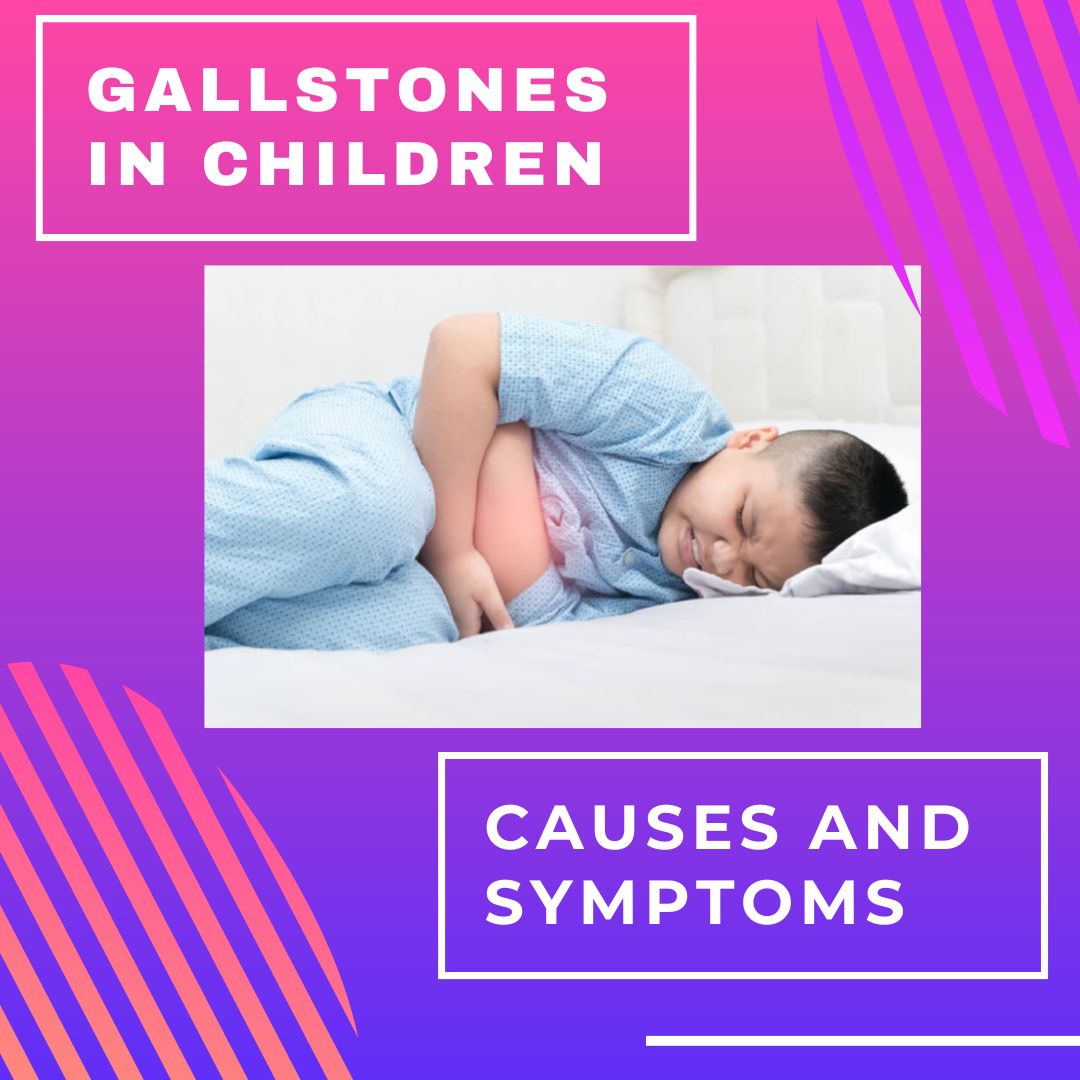Gallstones are a common condition in adults, but did you know that children can also develop them? Here’s what you need to know about gallstones in children
What are Gallstones?
Gallstones are small, hard deposits that form in the gallbladder, a small organ located beneath the liver that stores, concentrates, and releases the bile produced by the liver. These stones can vary in size and shape and can be composed of cholesterol, bilirubin, or a combination of both.
What Causes Gallstones in Children?
Gallstones form when the gall bladder’s ability to maintain the flow and concentration of bile is disturbed. Gallstones are essentially a result of gallbladder dysfunction. Some of the causes of this dysfunction are as follows:
- Preterm babies in the NICU are often at risk for developing gallstones. In this age group, however, the stones are asymptomatic and almost never require treatment.
- Genetics: Children with a family history of gallstones are at a higher risk of developing them themselves.
- Obesity: Children who are overweight or obese are more likely to develop gallstones.
- Sickle cell disease, thalassemia, and hereditary spherocytosis: Children with sickle cell disease and other such hemolytic anemias are at a higher risk of developing gallstones due to the increased breakdown of red blood cells.
- Dehydration, prolonged fasting, and certain drugs can all result in thick, inspissated bile in the gallbladder in which stones can form.
What are the Symptoms of Gallstones?
Gallstones are often asymptomatic, being discovered by chance on an ultrasound done for other reasons. However, they can sometimes cause a variety of symptoms, including:
- Abdominal pain: This is the most common symptom. The pain is usually “sharp”or “cramping”and localised to the upper part of the abdomen..
- Nausea and vomiting: Children with gallstones may experience nausea and vomiting, particularly after eating a fatty meal ( a meal rich in butter or oil).
- Jaundice: In rare cases, gallstones can block the bile duct and lead to jaundice, a condition that causes yellowing of the skin and eyes.
How are Gallstones in Children Treated?
Currently, the gold standard of treatment for symptomatic gallstones above 3 years of age is cholecystectomy, which is a surgery to remove the dysfunctional gallbladder. Asymptomatic gallstones can be observed without treatment. Medications such as ursodeoxycholic acid have been tried as a stone-dissolving therapy but have failed to show significant results. Symptomatic gallstones must be treated as the risk of complications such as pancreatitis and gallstone ileus are high.
About Dr. Geeta Kekre
Dr. Geeta Kekre is a pediatric surgeon in Pune She is a specialist in pediatric minimal access surgery including robotic surgery as well as reconstructive pediatric urology. After ten years in Mumbai, Dr. Kekre returned to her hometown bringing with her a passion for the surgical care of children and a distinct set of skills in the areas of pediatric minimal access surgery, pediatric endourology, fetal hydronephrosis and antenatal parental counseling, pediatric incontinence, and voiding dysfunction. Her focus is on tailoring surgical therapy to allow her patients to have as active and fun a childhood as possible while delivering the best achievable medical outcomes.


